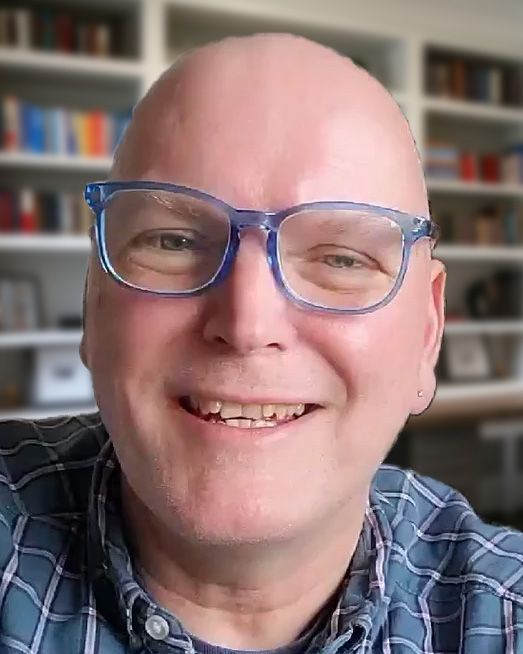The Quiet Loneliness of Midlife
Why Connection Feels Harder—and How We Begin to Reclaim It
At 57, I often move through rooms filled with laughter and familiarity—yet feel quietly alone. Conversations orbit around parenting, marriage, and shared histories I’ve never lived. I smile and offer warmth, but still feel like I’m on the outside looking in.
I long for connection, but often don’t recognize what it truly feels like. I can laugh and interact, yet something aches—a sense that I’m not fully seen or held.
Friends offer support, and I’m grateful. But I quickly fear I’ve overburdened them with my emotional needs. With no other outlet, I withdraw and spiral into depression—only to hurt others when my pain is mistaken for coldness. There’s always some vulnerability I leave hidden—some part of me that feels too tender to risk.
Life has brought natural disconnections: loved ones lost, or ideological divides that feel too personal to bridge. I carry love and hope for reconnection, but I also feel I need to protect my well-being—unsure how to be authentic without risking more hurt. These moments leave me feeling tender, guarded, and quietly adrift.
It’s a strange kind of loneliness—not the absence of people, but the absence of emotional safety. I can be surrounded by others and still feel invisible, unsure whether my truth can be held. That’s the kind of disconnection that lingers.
In 2023, the U.S. Surgeon General called loneliness a public health crisis. Its effects rival smoking and obesity, but the numbers only tell part of the story. The lived experience is far more complex—especially in midlife, when connection can feel elusive despite the appearance of community.
Therapy has helped me see that procrastination, disrupted sleep, and withdrawal aren’t failures—they’re protective responses rooted in old fears and unmet needs. I’m learning to meet myself with compassion, and to recognize that loneliness often stems from a lack of emotional resonance. True connection isn’t about fixing—it’s about presence. When someone hears the feeling beneath my words, I feel less alone. Not all relationships can meet me there, and that’s painful. But it’s also freeing—I can stop chasing approval and start seeking alignment.
Healing isn’t linear. Some days I feel grounded; others, I slip into old patterns. But I’m learning to trust myself and sit with emotions without being overtaken. Therapy hasn’t erased my pain, but it’s shown me I wasn’t broken—I was protecting parts of myself that never felt safe enough to be seen. Attachment theory reminds us that our need to feel safe and understood doesn’t fade with age. Emotionally Focused Therapy reframes these patterns as adaptive. Emotions become messengers, and therapy becomes a space to hear and reshape them.
I’m learning to reach for connection more authentically—not by performing or pleasing, but by showing up as myself. Loneliness isn’t a personal failure—it’s a relational signal. When honored, it opens the door to healing.
Reclaiming connection in midlife isn’t about reinvention—it’s about returning to our need to feel seen and safe. That need deepens with age, and meaningful connection often arises not from shared adventures, but from shared vulnerability. Small acts—reaching out, naming a feeling, staying present—create space for resonance.
You don’t have to be anyone else to belong. The story you carry—shaped by joy, loss, and quiet resilience—is enough. When you honor it, you invite others to do the same. And in that mutual recognition, something sacred happens: connection that doesn’t demand performance, only presence.
Connection begins not when we are perfect, but when we are present.
Reflection & Journaling Prompts
If this reflection stirred something in you, consider sitting with these questions—not to fix, but to gently explore:
- Where in your life do you feel most unseen, even when you're surrounded by others? Notice the spaces where emotional safety feels out of reach.
- What protective patterns—like withdrawal, over-functioning, or silence—might be asking for compassion rather than judgment? What if these responses are not flaws, but signals?
- What would it look like to show up more authentically in one relationship this week? Consider a small act of presence that doesn’t require performance.
- What part of your story feels tender, true, and ready to be honored? Let this be a moment to meet yourself with care.
References
Holt-Lunstad, J. (2023). Our Epidemic of Loneliness and Isolation: The U.S. Surgeon General’s Advisory on the Healing Effects of Social Connection and Community. U.S. Department of Health and Human Services. https://www.hhs.gov/sites/default/files/surgeon-general-social-connection-advisory.pdf
Mikulincer, M., & Shaver, P. R. (2016). Attachment in adulthood: Structure, dynamics, and change (2nd ed.). Guilford Press.
Johnson, S. M. (2004). The practice of emotionally focused couple therapy: Creating connection. Brunner-Routledge.
Siegel, D. J. (2010).
The mindful therapist: A clinician’s guide to mindsight and neural integration. W. W. Norton & Company.

As a counselor at the CTS Counseling Center in Indianapolis, David Bolander specializes in trauma and PTSD, anxiety and depression, attachment issues, relational dynamics, and concerns related to gender and sexuality. He holds Masters degrees in Clinical Mental Health Counseling and Divinity. He believes healing happens through authentic connection and provides a safe, collaborative space for individuals of all identities and backgrounds, respecting each person’s worldview and spiritual framework. He values diverse perspectives including insights from metaphysics, neuroscience, quantum theory, and near-death experiences.











